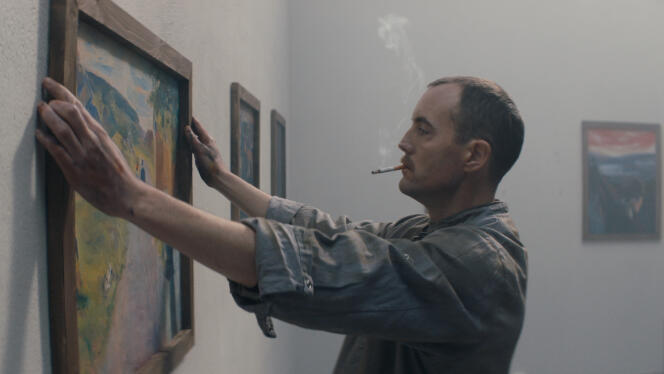THE OPINION OF THE “WORLD” – WHY NOT
The previous film made about Edvard Munch (1863-1944) takes us back to 1974, the release date of the remarkable feature film Edvard Munch, the dance of life, by the Englishman Peter Watkins, whose inextricable narrative and formal approach seemed to hold up a mirror to the artist, the complexity of his personality and his work. It was therefore necessary to wait fifty years for another filmmaker to dare to confront this universally known painter whose diversity of styles never ceased, in his time, to disconcert critics and amateurs.
This filmmaker, who is also Norwegian, knows Munch, as, he says, ” the most of [ses] compatriots » since childhood. Being born in the same country as the artist did not, however, spare Henrik Martin Dahlsbakken (Returning Home2015 ; Cellar2016; An Affair2018) of a long research and writing work.
It took him five years to achieve Munch. A film with chaotic contours which, likeEdvard Munch, the dance of life, frees itself from linear rules and formal conventions. As if it were a question of protecting the painter from all academicism at all costs.
Free yourself from linear rules
Henrik Martin Dahlsbakken sticks to it, shaking up the narrative chronology in favor of a fragmented story featuring four determining periods in the painter’s life and work. First his youthful years, during a vacation in the county of Vestfold, where the young Edvard fell in love with a married woman. Then his 30th birthday, which the filmmaker chooses to represent in a Berlin of the 2000s, where, suffering criticism and rejection, the artist abandons himself to long monologues and gets drunk in the thick heat of nightclubs. His 40th birthday follows, represented by a stay in a psychiatric institute, where Munch, prey to all kinds of illuminations, confides his anxieties and his artistic questions to Doctor Daniel Jacobson. Finally, old age, where, holed up in his home, the artist watches over the preservation of his work in a Norway occupied by the Germans.
To each of these periods, the filmmaker chose to attribute its own aesthetic (from naturalism to black and white, via hyperrealism) and to Munch a different interpreter, the painter appearing respectively, at 20, at 30, at 40 years old, in the guise of the actors Alfred Ekker Strande, Mattis Herman Nyquist, Ola G. Furuseth then, at the end of his life, the actress Anne Krigsvoll. These radical choices, which aim to reflect both Munch’s personal vertigo and the various fields of exploration to which he lent himself throughout his life, have at least the double merit of avoiding the pictorial effect (“in the manner of”) and simplification – of the man as much as of his work.
You have 20% of this article left to read. The rest is reserved for subscribers.
